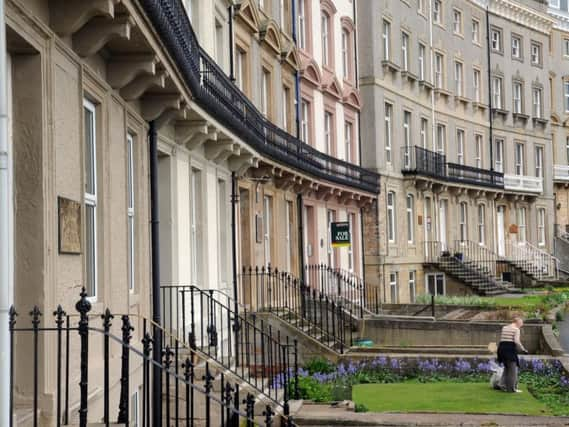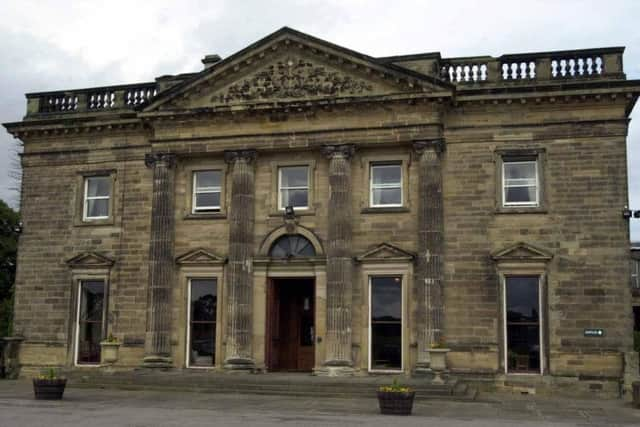Following the trail of the railway king: The legacy George Hudson left in Yorkshire


He was the York draper who shrewdly invested in railways just as a new transport frontier was being breached - but ended his career in disgrace after being accused of financial wrongdoing and declared bankrupt.
Hudson has left a legacy in his home city and further afield in Yorkshire which still resonates today, and many buildings associated with him and his family are still standing.
Advertisement
Hide AdAdvertisement
Hide AdWhy the last survivor of a great country estate could soon be part of the Saltaire tourist trailThe crowning of the railway king


Hudson came from the village of Howsham, near York, and his background was modest. He moved to the city as an apprentice draper with a firm on College Street called Bell and Nicholson. He impressed his employers so much that he was given a share in the business and allowed to marry Nicholson's daughter Elizabeth. When Bell retired, it became Nicholson and Hudson was by 1827 it was the largest drapery in York.
He was one of number of prominent businessmen who formed their own railway committee in 1933, with the intention of linking York to Leeds. Hudson, however, then became interested in a scheme George Stephenson was proposing after meeting the famous railway engineer in Whitby the following year. Stephenson dreamed of linking London to Newcastle with a line via Leeds - although York was not on the route he suggested.
Hudson's committee later renamed themselves the York and North Midland Railway, and the aim was for their new line to link with the North Midland Railway, which ran from London via Derby to Leeds, at Normanton. When the new line opened in 1840, it meant York was connected to London, with the journey taking less than 12 hours.
Advertisement
Hide AdAdvertisement
Hide AdBy 1845, Hudson owned the route from York to Whitby, a town he believed had potential to develop into a resort and where he owned property. He also opened routes to Scarborough, Hull, Harrogate and Bridlington.
Staggering Stone Age find made at quarry near NorthallertonHudson then oversaw a merger of the three companies that operated the route from York to London. He became chairman of the new Midland Railway.
Although Hudson did want York to become a major railway hub, he opposed a rival scheme, the Great Northern Railway, that would offer a quicker journey to London than his own lines. The Great Northern's proposal was for a route to run via Doncaster, but they eventually abandoned their plans for a new line in return for running rights into York on Hudson's existing routes. By 1852, trains were running to York via Lincolnshire on what is now the East Coast Main Line.
Downfall and ruin
Hudson was involved in several more major projects, but eventually aspersions were cast about his financial methods, and it was revealed that he had been paying shareholders in capital rather than profit and massively over-valuing shares.
Advertisement
Hide AdAdvertisement
Hide AdHe faced inquiries, offered to pay back £30,000 and resigned from the chairmanship in 1849.
An allegation was made that Hudson has misused funds to build himself a private station on his Londesborough Park country estate on the Market Weighton line, which he had initially purchased to prevent a rival building on the land.
He was asked to repay a further £750,000 and sold the estate.
In 1852 he rejected an offer to settle £50,000 in outstanding debts, and the York and North Midland Railway filed three legal cases against him, all of which he lost. He negotiated a settlement of £72,000 and had to sell his country home, Newby Park, to Viscount Downe.
Advertisement
Hide AdAdvertisement
Hide AdHe later stood for parliament, and after an election defeat in 1859 he went into exile abroad.
In 1865, he returned from France and contested the Whitby parliamentary seat, but was arrested as a debtor before the poll was held.
It was not until 1871 that the railway ended its pursuit of the remaining debts, and Hudson died the same year.
Incredibly rare plants discovered at Yorkshire stately home after being forgotten about for decadesLegacy in York
Advertisement
Hide AdAdvertisement
Hide Ad1 College Street was the location of the first draper's shop Hudson worked at in York, and he also lived above the premises for a while. It's now a National Trust gift shop and a plaque commemorates its history.
44 Monkgate was a property Hudson inherited from a wealthy uncle, and it became his family home between 1827 and 1844. It's now called Hudson House and has been converted into flats after being occupied by several businesses over the years.
The country residences
Like many self-made men in the 19th century, Hudson was keen to ape the style of the country gentry. During the height of his fame, he purchased three estates with the intention of passing them on to his three sons within just a two-year period.
Londesborough Park, between York and Market Weighton, was a strategic purchase, as buying it prevented his rival George Leeman from building a line through the estate land. Hudson only owned the property for five years before selling it in 1850 to pay off his debts.
Advertisement
Hide AdAdvertisement
Hide AdHudson had bought it from the Cavendish family, Dukes of Devonshire, whose main seat was Chatsworth. They had demolished the original Elizabethan house and replaced it with a hunting lodge. The buyer when Hudson put it back on the market was politician Albert Denison, and today the estate is owned by the Ashwin family.
The private railway station built to serve Hudson's residence lasted another 17 years, closing in 1867 due to low usage.
Octon Grange, near Bridlington, was intended to provide an inheritance for his sons George, John and William. It's not clear whether there was a property on the manor at this time, but it was close to his planned route for a York to Bridlington line.
Newby Park was the jewel in Hudson's property empire - his main country residence after the family left York. He purchased the estate from Lord de Grey in 1845 and rebuilt the Palladian villa, renaming it Baldersby Park. He was later forced to sell during his financial ruin, and the house at Topcliffe, between Thirsk and Ripon, is now home to a fee-paying school.
Advertisement
Hide AdAdvertisement
Hide AdHudson's London townhouse in Knightsbridge is now the French embassy.
Whitby and the West Cliff dream
Hudson had a long association with Whitby, and some of the property he inherited from his great-uncle was located in the town, which he believed had potential to become an upmarket resort.
For this reason, he was popular in Whitby, and formed a development company which began to build the elegant West Cliff in the 1850s. Unfortunately, it was mortgaged to the railway, so Hudson was unable to continue with the work after his resignation and bankruptcy.
He was so confident of transforming Whitby that he risked returning from exile in 1865 to oppose Harry Thompson, the chairman of the North Eastern Railway whose ownership West Cliff had passed to, in the parliamentary election.
Advertisement
Hide AdAdvertisement
Hide AdThompson had failed to link Whitby to the national rail network and he had promoted Scarborough as a seaside resort at Whitby's expense, which was seen as a betrayal that Hudson capitalised on.
The West Cliff development included the Khyber Pass road, the Royal Hotel, the Royal Crescent townhouses and Crescent Gardens. The terrace was only half-finished when Hudson lost his fortune and work was never resumed. His dream had been to create elegant squares and promenades to rival those of Bath.